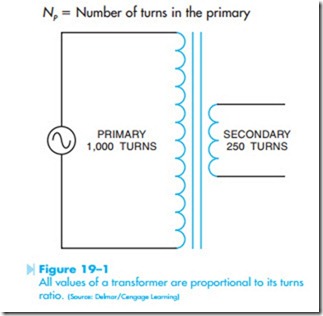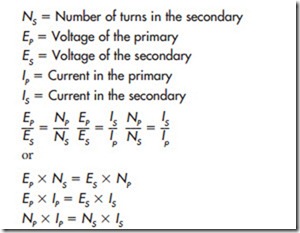Transformers are one of the most common devices found in the HVAC field. They range in size from occupying a space of less than 1 cubic inch to requiring rail cars to move them after they have been broken into sections. Their ratings can range from mVA (millivolt amps) to GVA (gigavolt amps).
A transformer is a magnetically operated machine that can change values of voltage, current, and impedance without a change of frequency.
Transformers are the most efficient machines known. Their efficiencies commonly range from 90% to 99% at full load. Transformers can be divided into several classifications such as:
A. Isolation.
B. Auto.
C. Current.
A basic law concerning transformers is that all values of a transformer are proportional to its turns ratio. This does not mean that the exact number of turns of wire on each winding must be known to determine different values of voltage and cur- rent for a transformer. What must be known is the ratio of turns. For example, assume a transformer 1,000 turns of wire and the other, the secondary, has 250 turns of wire, Figure 19–1. The turns ratio of this transformer is 4 to 1 or 4:1 (1,000/250 = 4).
This indicates there are four turns of wire on the primary for every one turn of wire on the secondary.
TRANSFORMER FORMULAS
There are different formulas that can be used to find the values of voltage and current for a transformer. The following is a list of standard formulas:
The primary winding of a transformer is the power input winding. It is the winding that is connected to the incoming power supply. The secondary winding is the load winding or output winding. It is the side of the transformer that is connected to the driven load, Figure 19–2. Any winding of a transformer can be used as a primary or secondary winding provided its voltage or current rating is not exceeded. Transformers can also be operated at a lower voltage than their rating indicates, but they cannot be connected to a higher voltage. Assume the transformer shown in Figure 19–2, for example, has a primary voltage ra ting of 480 volts and the secondary has a voltage rating of 240 volts. Now assume that the primary winding is connected to a 120-volt source. No damage would occur to the transformer, but the secondary winding would pro- duce only 60 volts.

